Feel like an uncaged bird and get lost, soar–or vola in Italian–through the blue painted blue waters and white washed limestone streets of Polignano a Mare, Italy in Puglia.
One of the most iconic photographed Italian cities is Polignano a Mare, Italy. Located on the heel of Italy in Puglia, this village was made famous because of it’s white washed city located on top of numerous grottos and it’s famous Lama Monachile beach. It’s the first stop on many people’s itinerary when traveling through Puglia. My mother and I got off at Bari airport, picked up our Mini Cooper from the car rental, and drove about 30 minutes before arriving. The most interesting area in Polignano a Mare is the centro storico, or historic area. This is where you should be based during your stay.
My mom and I arrived around 6PM, checked into our Bed and Breakfast Dimora Santo Stefano, and made our way out for dinner. The next morning we explored the centro storico of Polignano a Mare in all of it’s glory. There are many scenic spots that allow you to capture the beauty of Polignano a Mare…almost too many to count. Throughout my guide, you will come across four very different yet unique view points, each with a different perspective to offer.
What you’ll find in this article:
Stay: Bed and Breakfast Dimora Santo Stefano
Eat: Antiche Mura
Do:
- Wander the streets of il centro storico
- View Point #1
- Poetry on every wall
- View Point #2: Terrazza Santo Stefano
- Piazza Vittorio Emanuele II
- Lama Monachile Beach and Ponte Borbonico
- Domenico Modugno Statue
- View Point #3: Pietra Piatta
- Beaches: Natural Swimming Pool Grottone at Lido Cala Paura
- View Point #4: Punto Panoramico Largo Ardito
Polignano a Mare Itinerary Map
How To Get Around Polignano a Mare
Important Things to Keep in Mind
<h2 id=”eat”>
Where to Eat
Antiche Mura
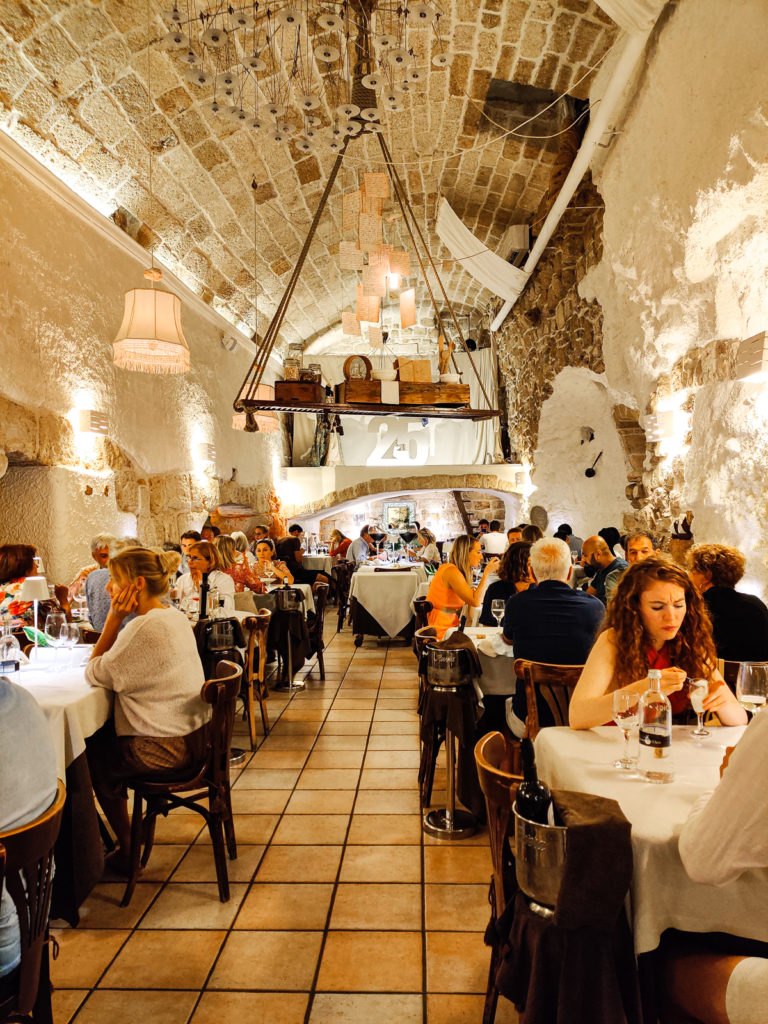
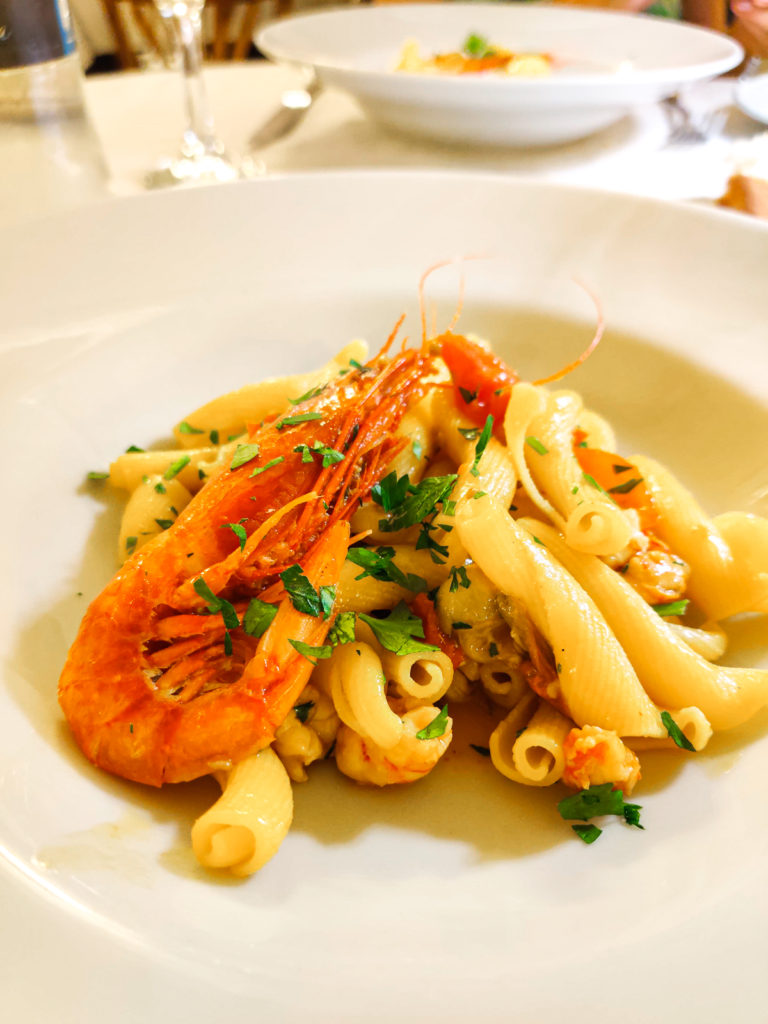
Polignano a Mare Restaurant: Antiche Mura
This is not an overrated Polignano a Mare restaurant. Antiche Mura is a place where you can dine while taking in the history of il centro storico. It’s where locals go when they’re looking for a good meal that isn’t overrated. The inside is charming and has a touch of elegance to it. It feels like you’re dining in a refined, white-washed cave. The dishes of choice here, of course, are mainly fish based. In reality Antiche Mura is known for is their Antiche Mura appetizer, but we ordered the baby squid as a starter–equally as satisfying and exquisite. Choosing a highlight for this meal was difficult…as an entree I ordered the torchietti pasta with red shrimp and zucchini flowers. Given the quality of fish, pasta, service, and overall atmosphere of Antiche Mura, I was surprised when the check came. Prices are very reasonable unlike other more touristy Polignano a Mare restaurants. 2 entrees and 1 antipasto was just 32 euro for 2 people.
<h2 id=”do”>
What to Do
<h3 id=”wander”>
1. Wander the Streets of il centro storico
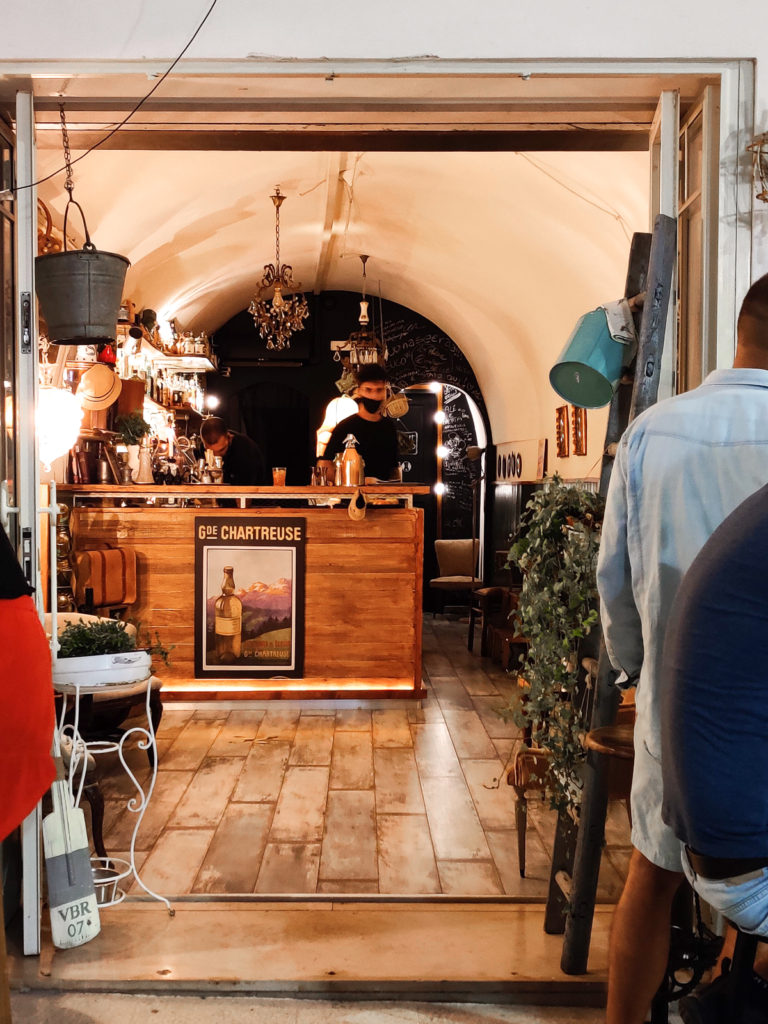
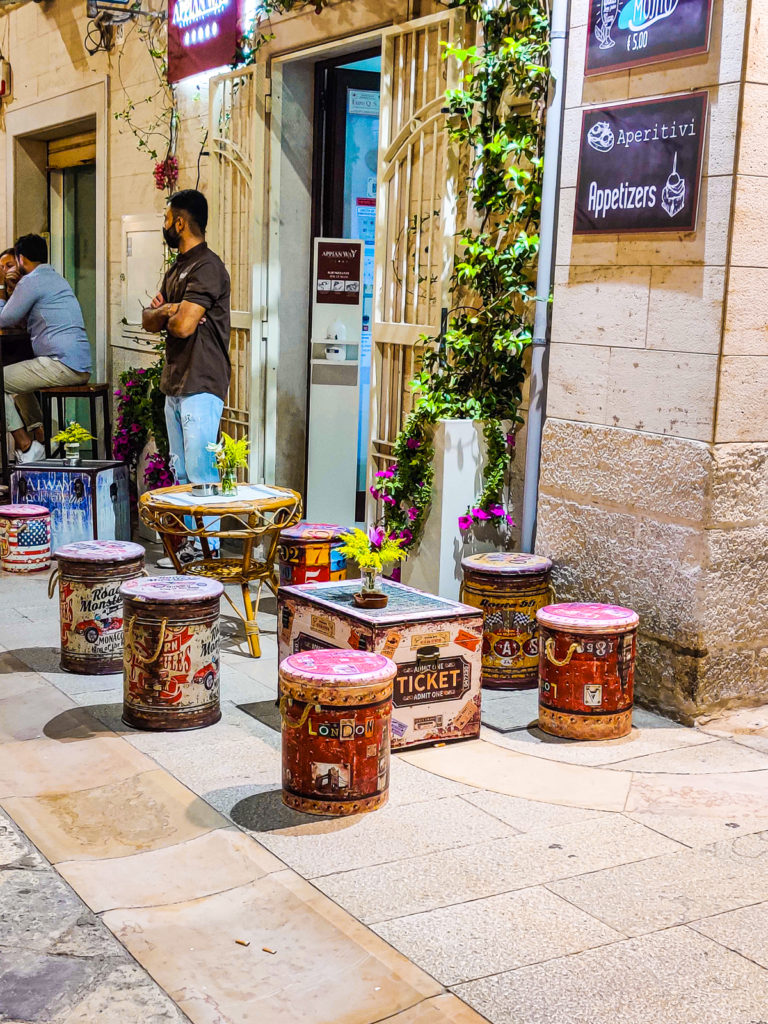
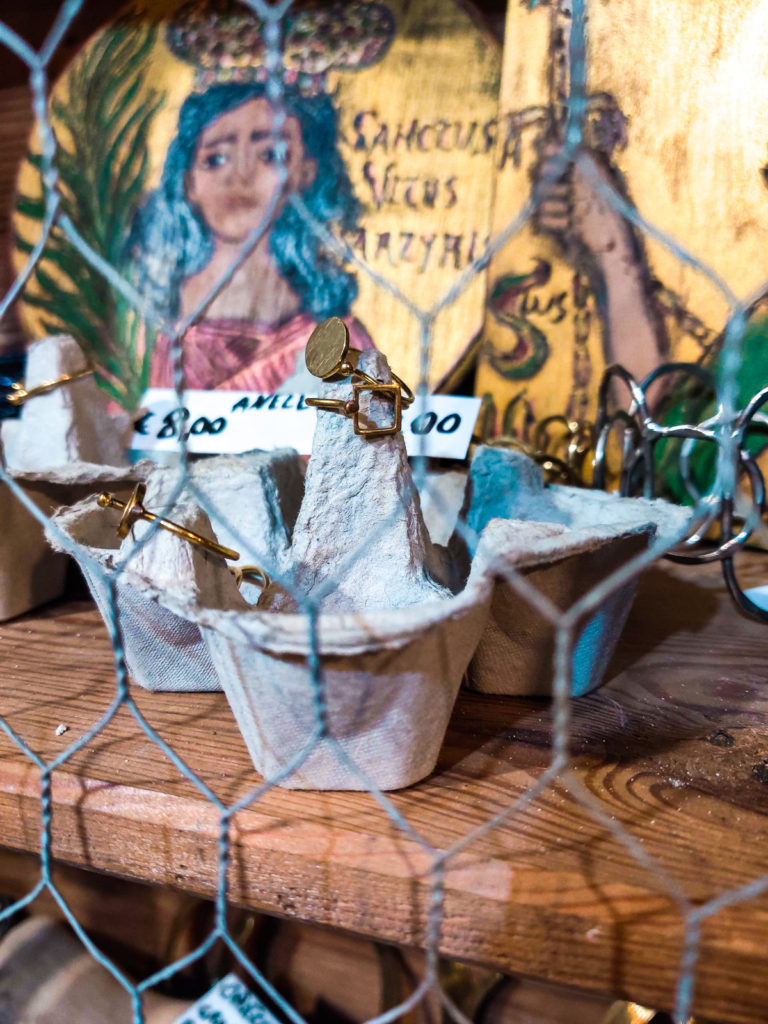
Following dinner we wandered around some stores and bars open at night. Wandering through the streets of Polignano a Mare at night is magical. The locals pay a lot of attention to detail and decorate the town in plenty of string lights, boho lanterns, and unique lighting. I loved the boho vibe Polignano a Mare had throughout the streets. Old trunks used as tables, fun poufs or embroidered stools used as seats, simple yet quirky decor inside. There are so many places to choose from should you want to grab a drink at night. Being our first night we didn’t stop by too many places, but I will call out a few that were worth visiting.
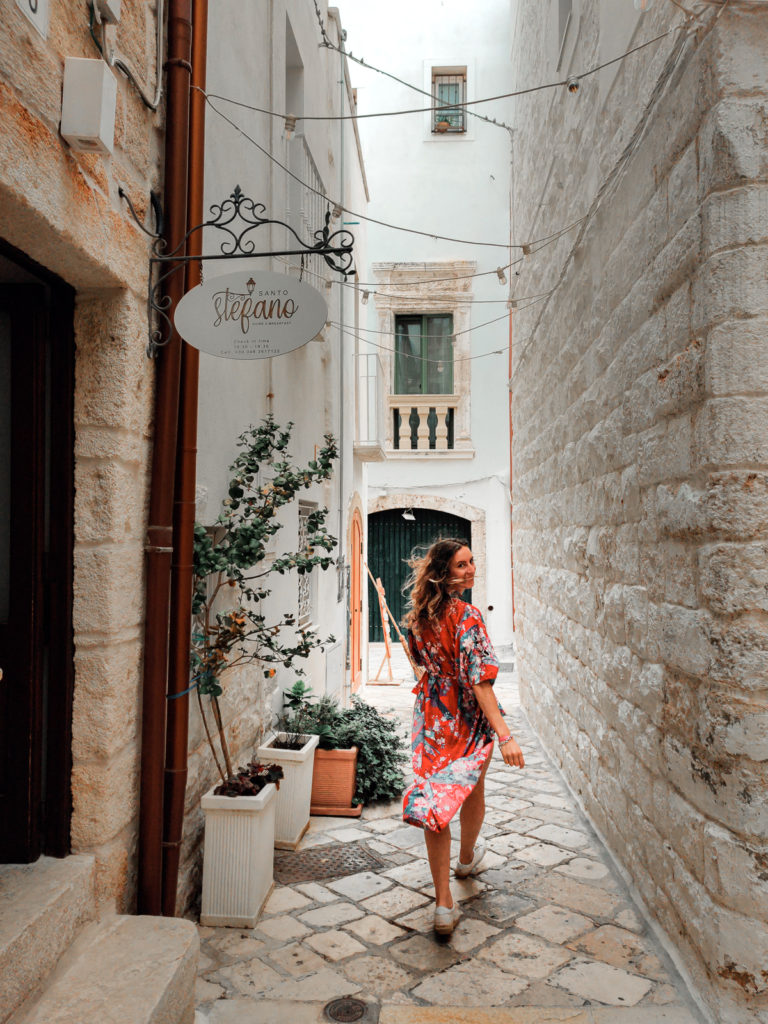
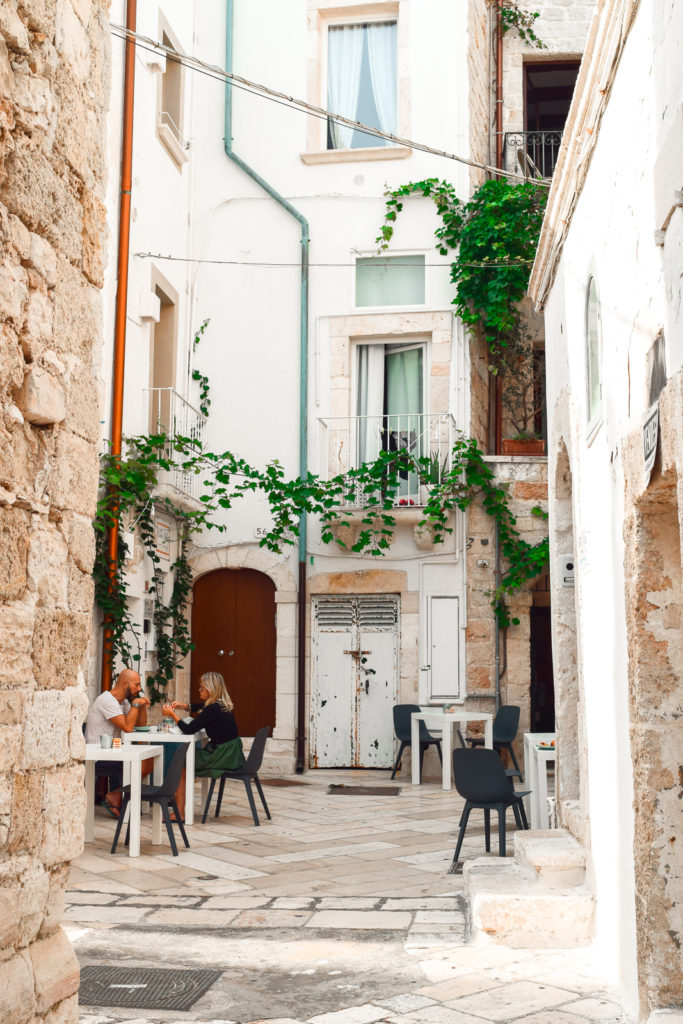

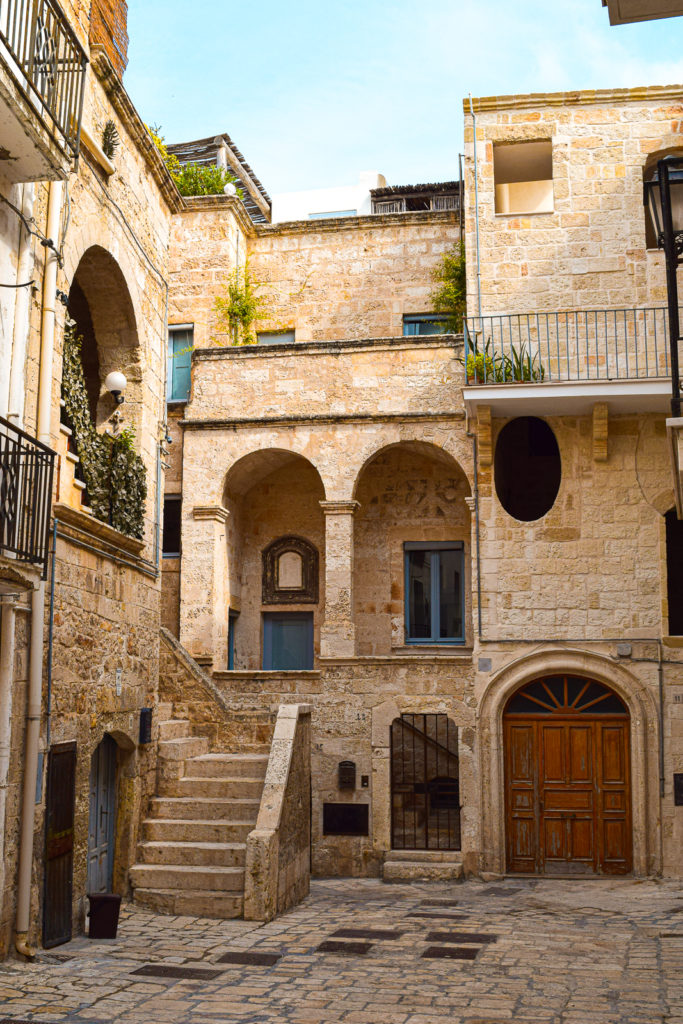
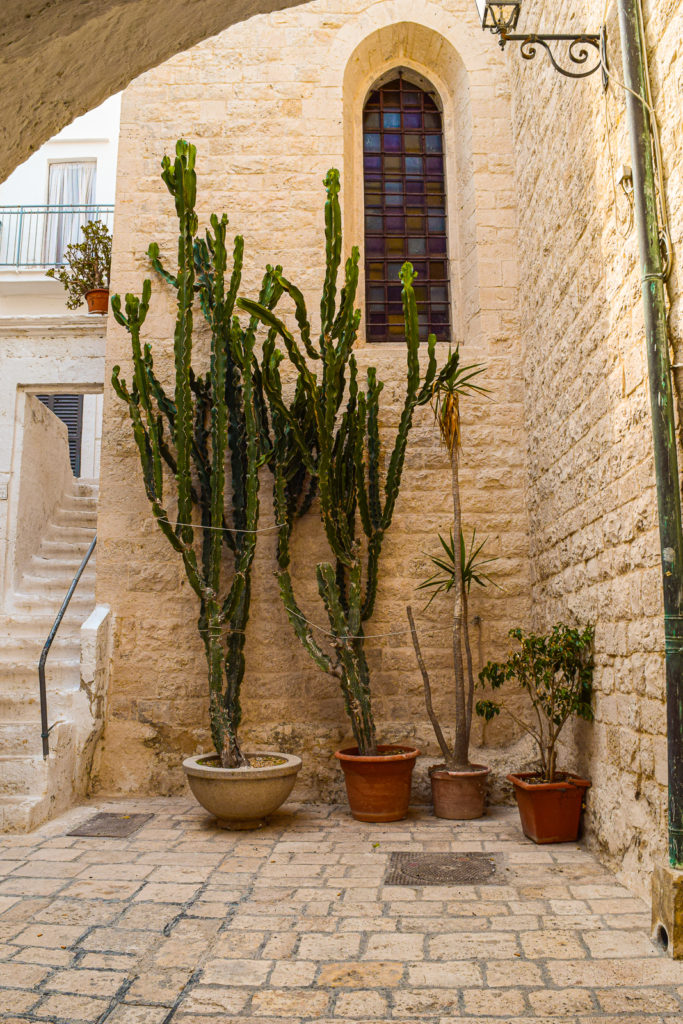
Centro storico is fairly small, so if you didn’t wander the streets the night before, wander them in the morning. There are so many small nooks, old buildings, churches, and plants and cacti in every corner that give it a tropical boho vibe. Unlike Mykonos that’s white washed, Polignano a Mare is rich in tuff so you’ll see a mix of yellow and white stones everywhere.
2. View Point #1
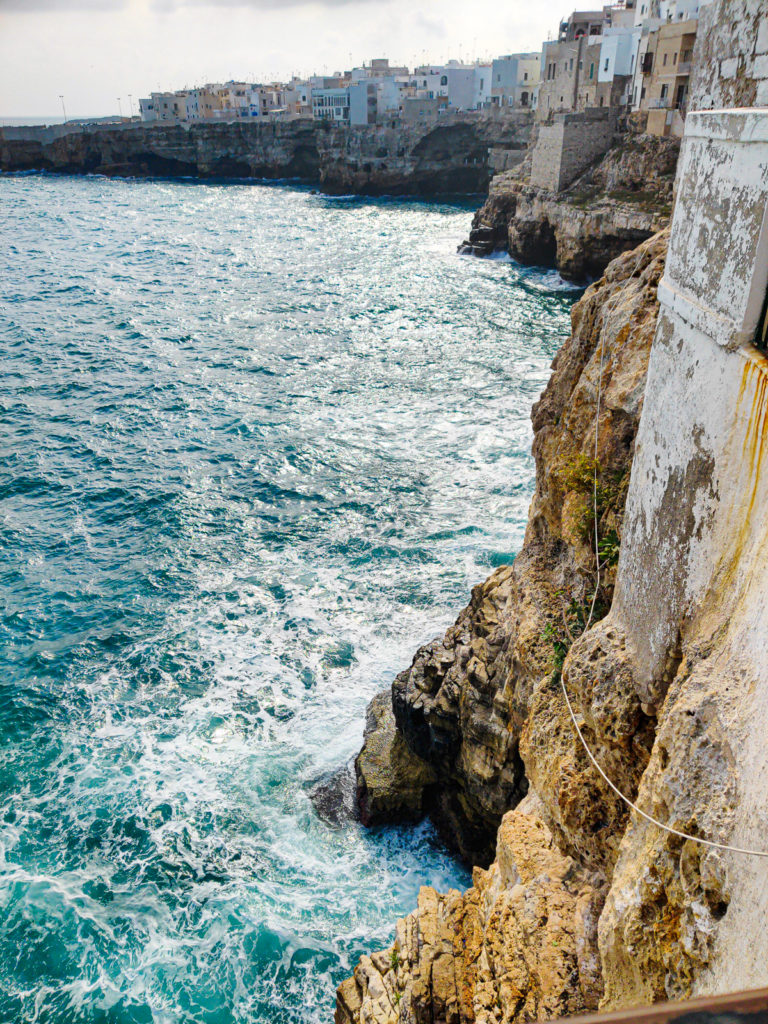
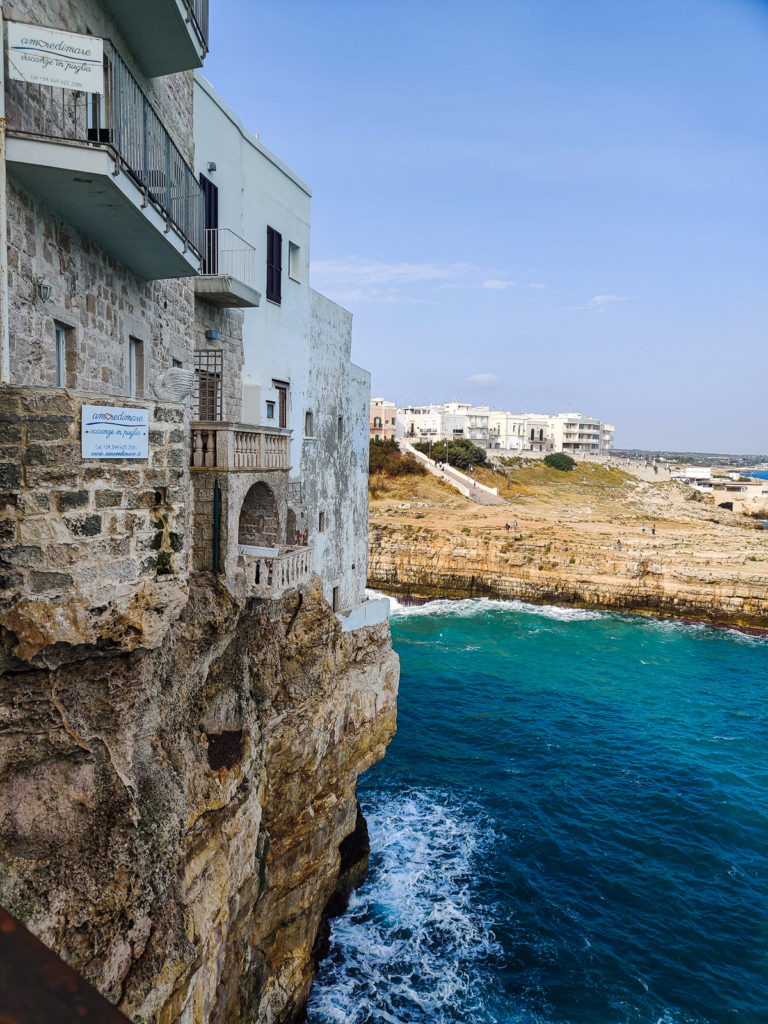
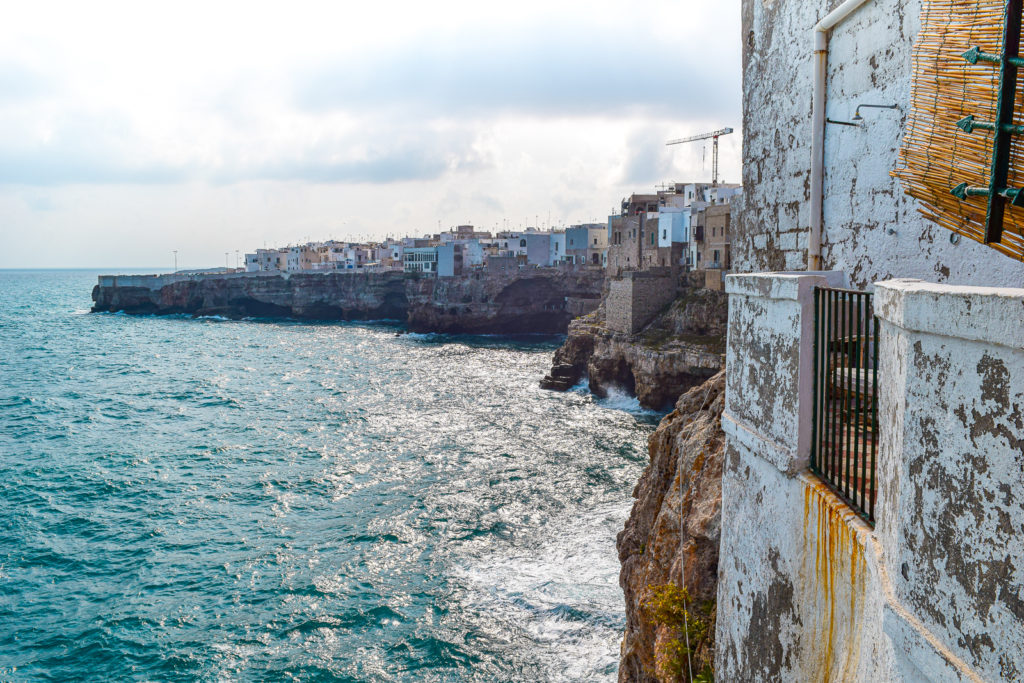
As mentioned before, there are many view points in Polignano a Mare. Almost too many to count. So I’m spotlighting four different ones each with a unique perspective. The first is located just in front of Bed and Breakfast Dimora Santo Stefano. From here you can see some of the older antique palaces facing the Adriatic sea. Polignano a Mare’s unique shape above coves and grottos was formed by the rough sea. Creepy to think about…but some of the caves are so deep, they reach the center of town, you just can’t see it! Remains and evidence of humans from the Paleolithic Age have been in these caves.
3. Poetry on every wall
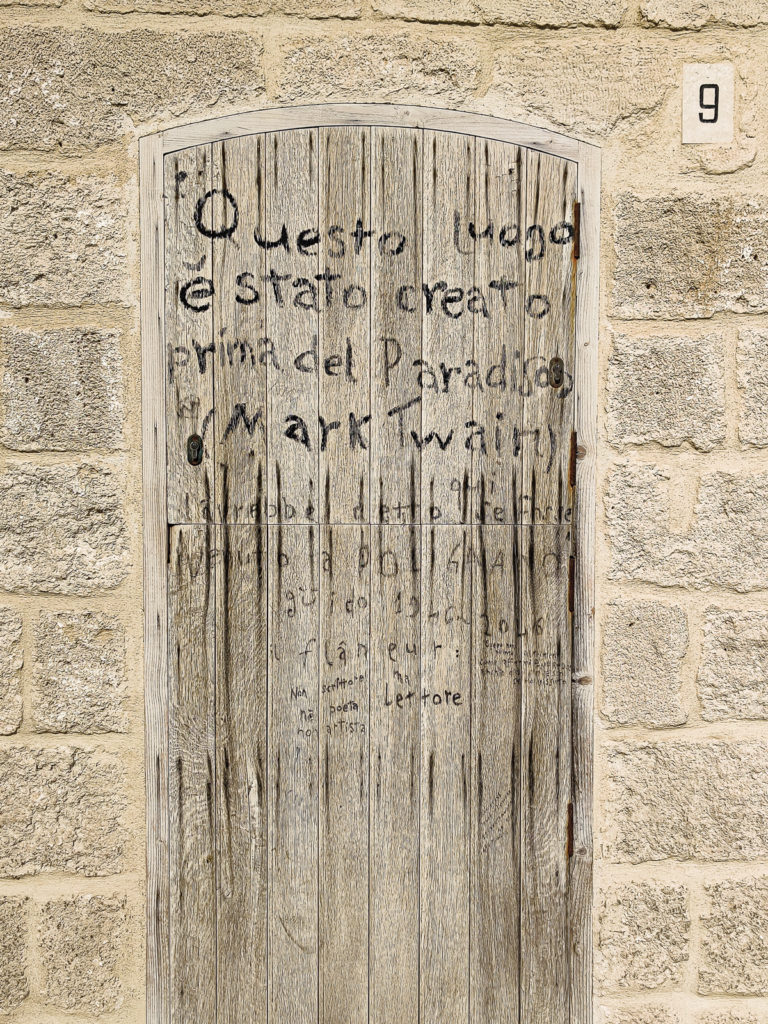
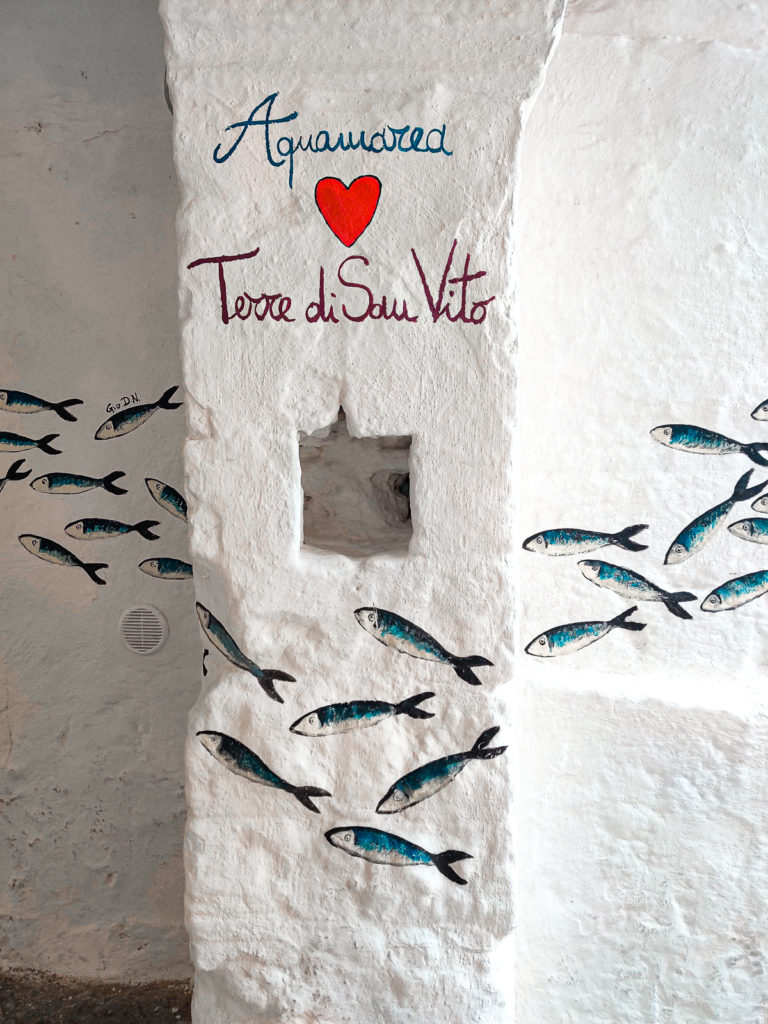
This is a fun anecdote that many may overlook as just simple “graffiti,” but in fact is not and is intentional. You will notice short notes or poems written on the walls, steps, and ground of Polignano a Mare. It’s not just a coincidence that they all seem to look like poetry. A man known by the name of Guido il Flâneur, although that’s not is actual name, is behind these small spells of art. Thirty years ago he came to Polignano a Mare to pursue a career in writing. Ever since his arrival he has been inspired and and creates little poems and notes throughout the town.
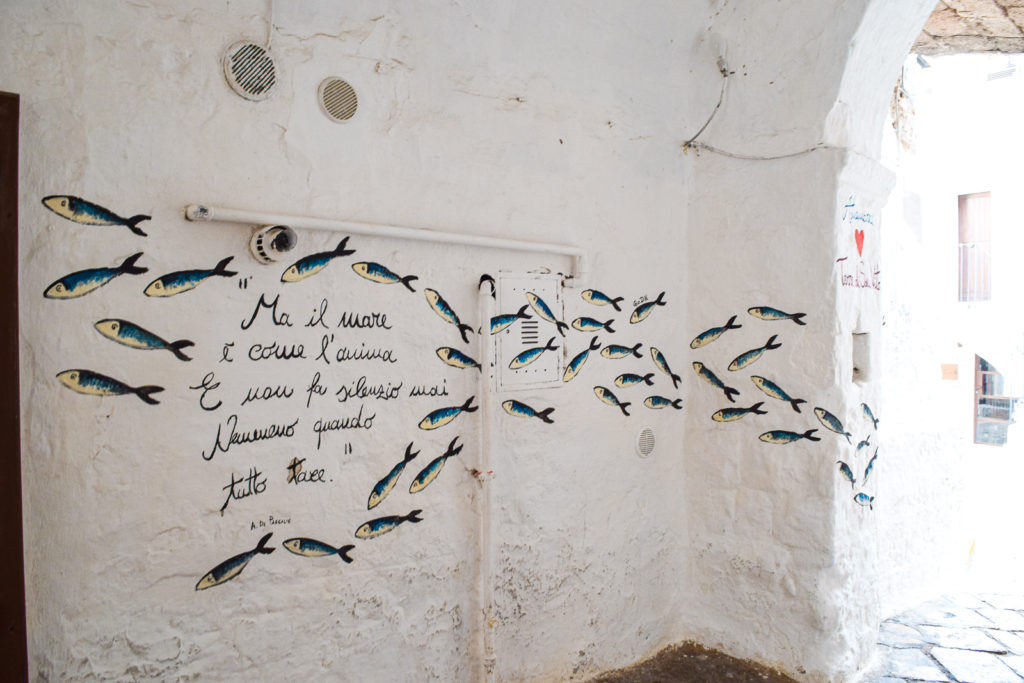
Like many famous novelists who use pen names–like George Sand, Mark Twain, and Richard Jackman–no one actually knows this creative artists’ real name. Flâneur is a word invented by Baudelaire to define a man who wanders around a place to live and experience it. While his claim to fame are the famous steps, I actually was more intrigued by a lively poem located in a small white tunnel. The poem was led by a school of fish. At the heart of this stream of fish was a short blurb: “But the sea is like the soul and is never quiet. Even when everything goes silent.” This particularly stuck with me since Italy had just made it out of the COVID pandemic. It was like a piece of history written in the wall.
4. View Point #2: Terrazza Santo Stefano
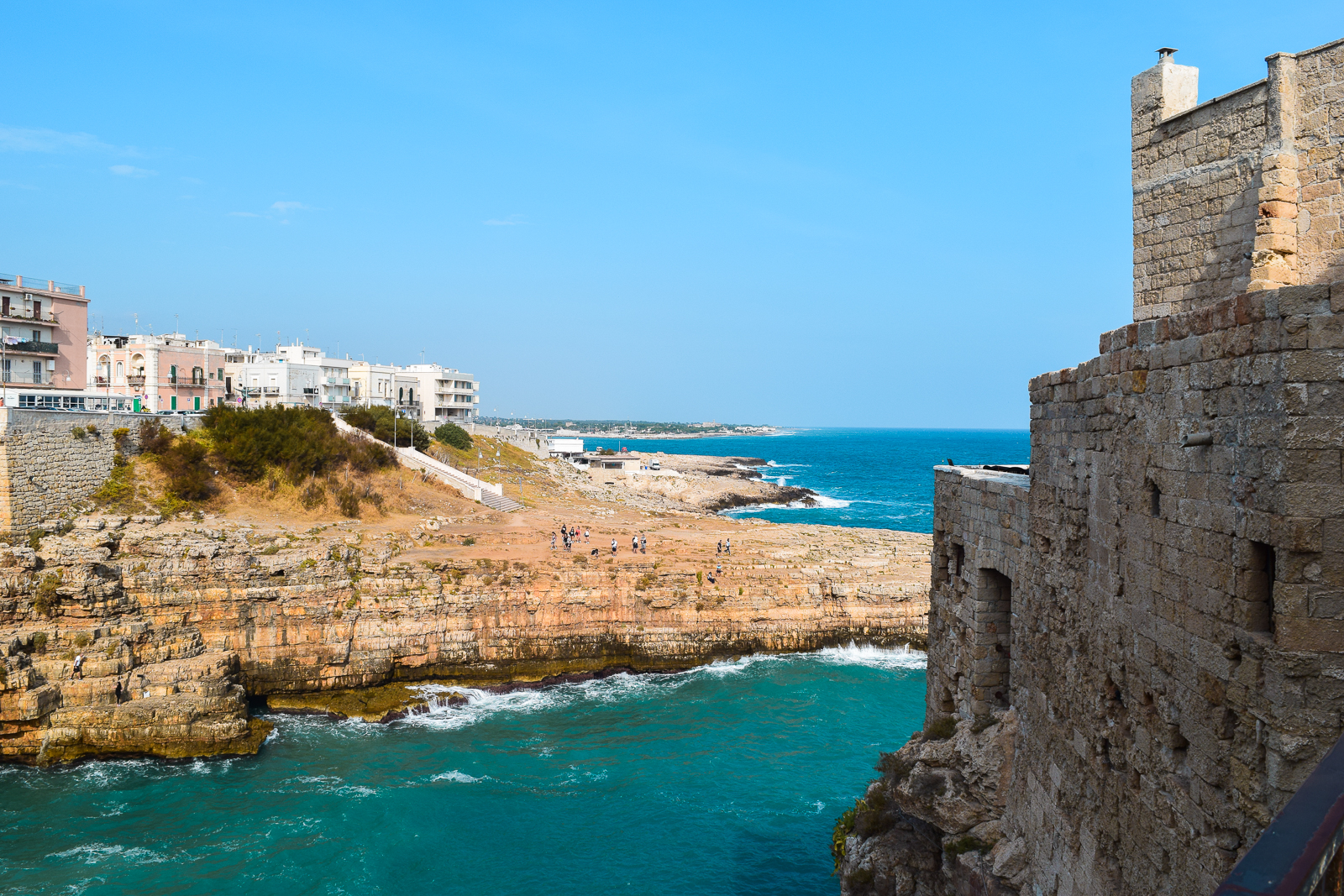
Terrazza Santo Stefano has a phenomenal view of Pietra Piatta and Lama Monachile beach. But what you don’t know, is that this is one of places where the Cliff Diving World Series takes place. And yes, that is a thing! It is such an unusual sight to see, but during the Red Bull Cliff Diving world series, athletes enter the platform via a private house before diving off the towering cliffs, where buildings perch precariously, into the Adriatic Sea. I mean, to be quite honest, I had no idea cliff diving was a competitive sport. But let Red Bull take care of that. When I googled it I became immediately enraptured. It is such a cool and addicting sport! Check out the Redbull Cliff Diving World Series held at Polignano a Mare in 2019 here.
5. Piazza Vittorio Emanuele II
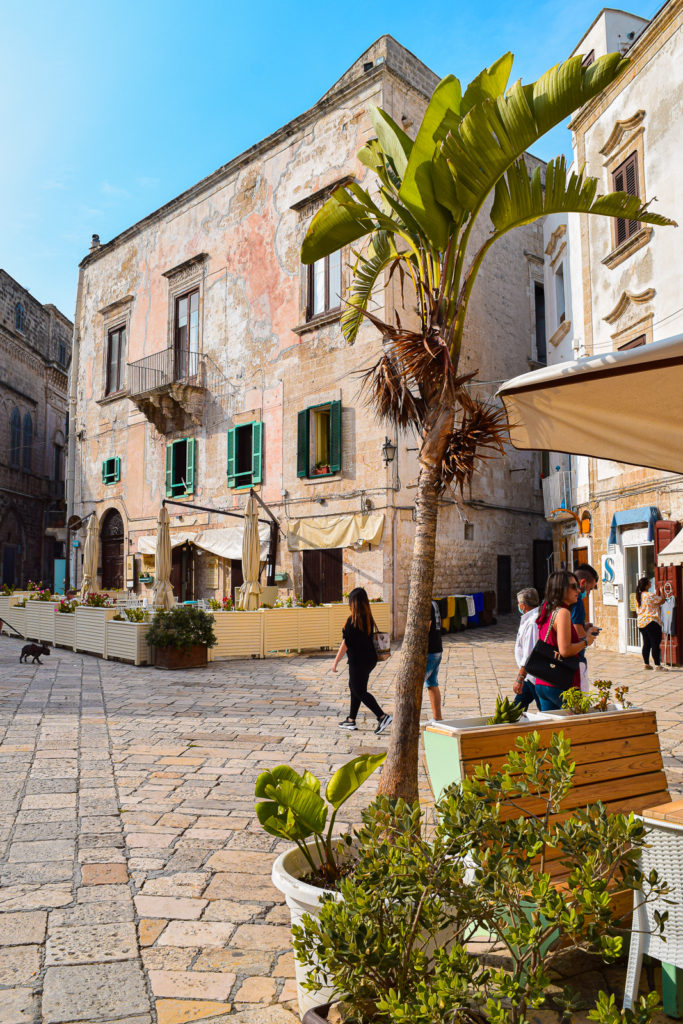
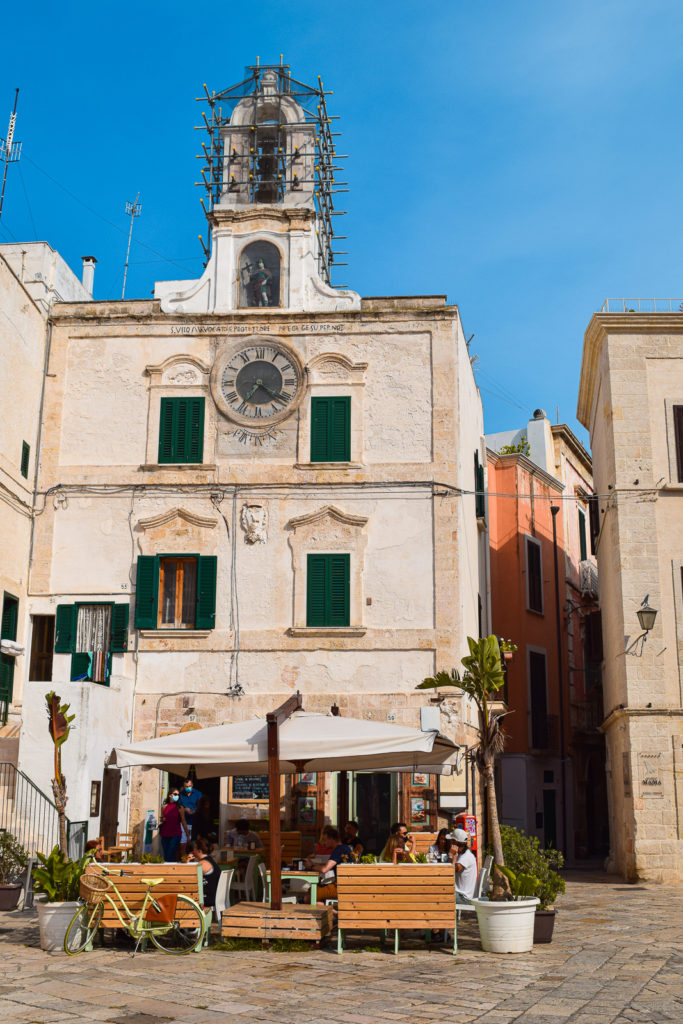
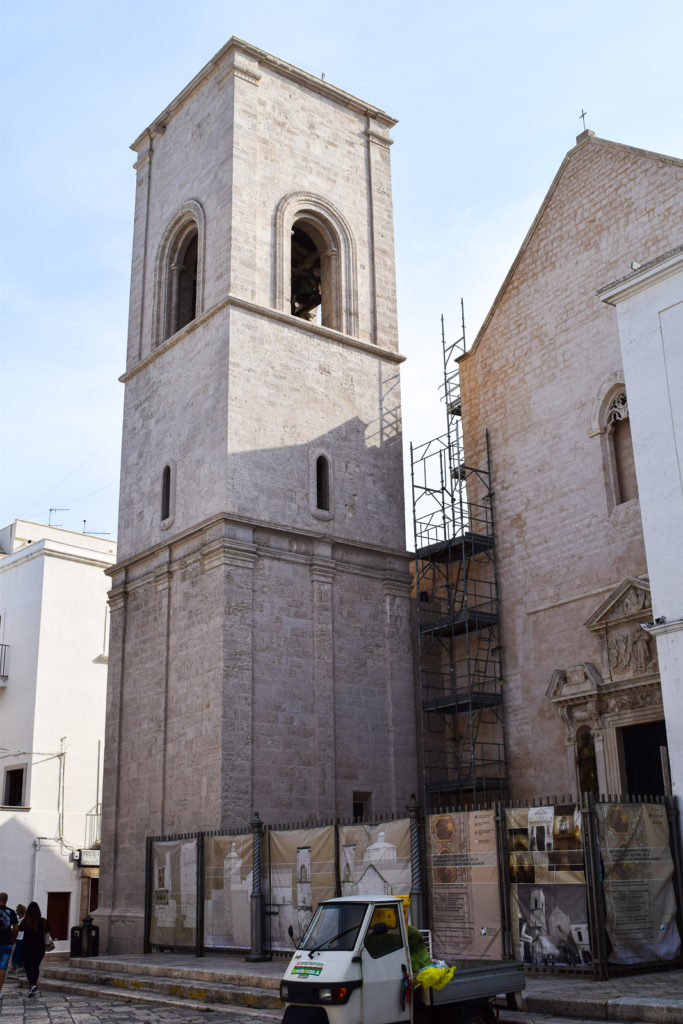

In Piazza Vittorio Emanuele II you’ll find the medieval clock tower, that to this day is still adjusted by hand. To the right of that is the Church of Santa Maria Assunta, also know as the Mother Church or Chiesa Matrice, dedicated to the Blessed Virgin. It was built on the remains of a pagan temple and consecrated in 1295. In 1613, in the open dome, a chapel was built to guard the remaining bone fragments of the knee and arm of St. Vito. Saint Vitus is considered the Christian Saint of actors, comedians, dancers, and epileptics. His name is associated with entertainment because Germans used to celebrate his feast by dancing before his statue. He is also said to protect against lightening strikes, animal attacks, and oversleeping.
St. Vito’s treasures were stored here until they were stolen in 1992. Over the years, generous donors have helped restores his treasures to their rightful place where you can see them today.
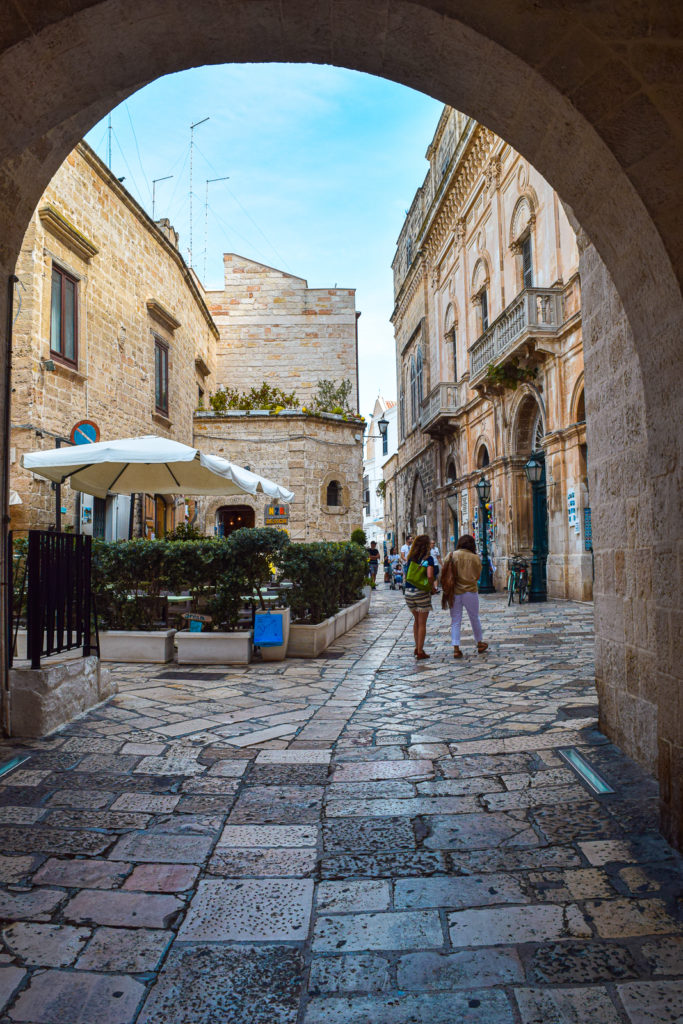
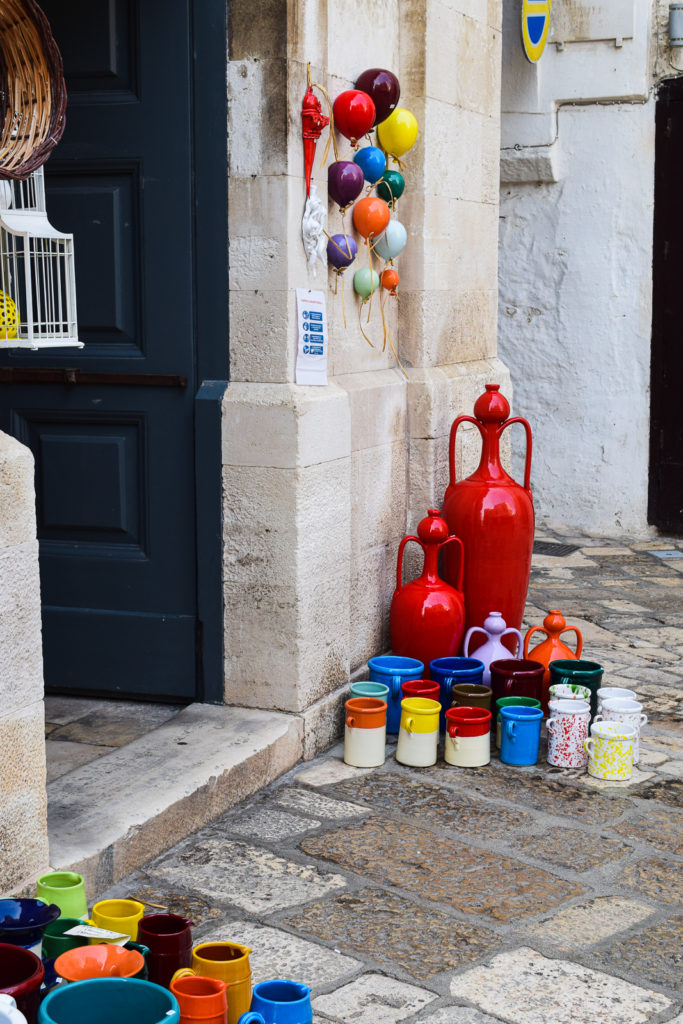
Of course there are also many fun alleys right off Piazza Vittorio Emanuele II that have stores that sell typical ceramica pugliese or Apulian ceramics. Puglia is famous for its long history in pottery and ceramics. You’ll come across more on this in my trip to Grottaglie, but you basically will find stores in any local town in Puglia. While the pottery used to have a functional purpose, you’ll notice that now its main purpose is purely decorative. You’ll find many ceramic pieces on balconies, in front of homes, and as center pieces in hotels.
6. Lama Monachile Beach and Ponte Borbonico
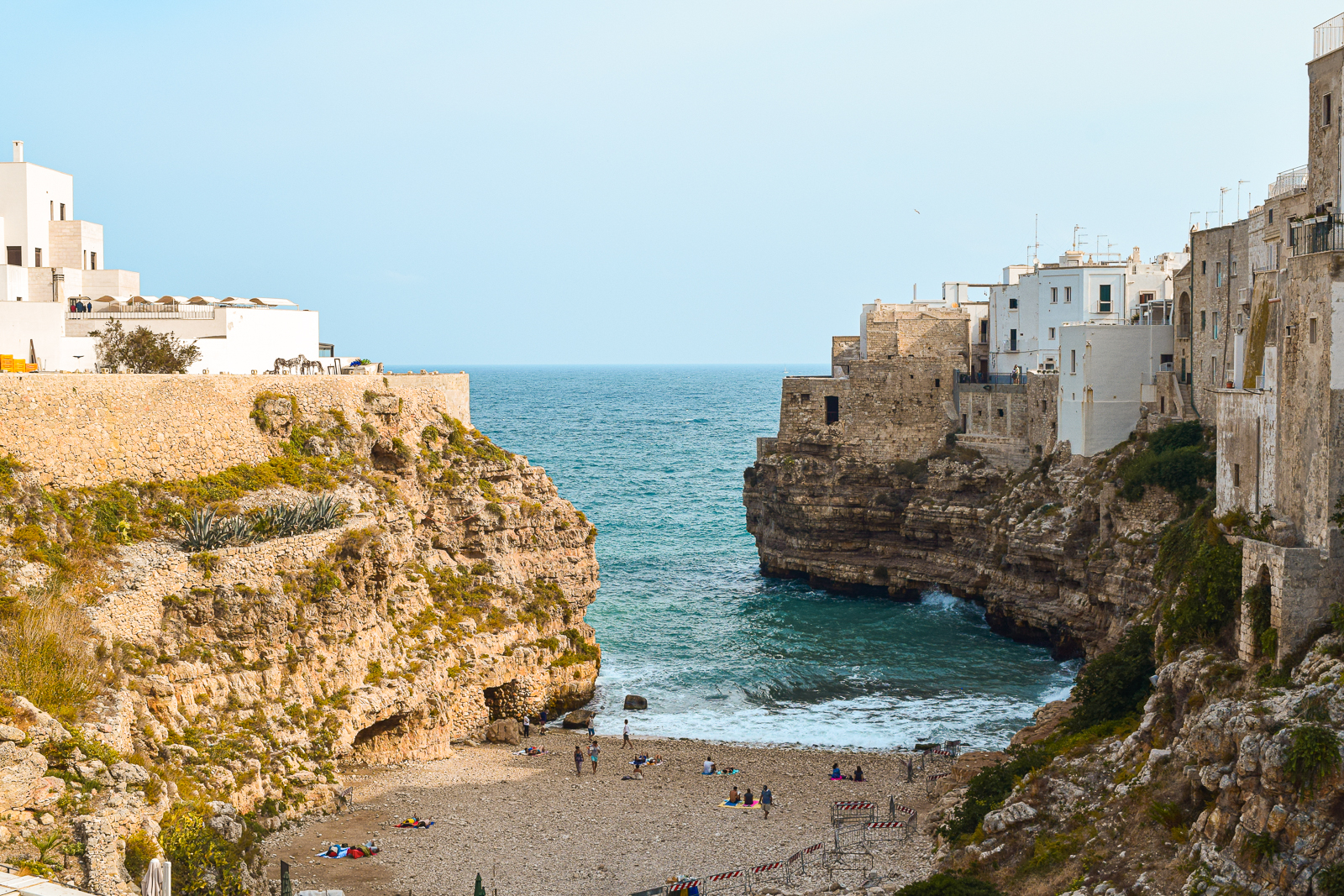
Lama Monachile beach is also known as Cala Porto. I know right? It feels like every other place I mention is “also known as”…that’s why it’s easy to get lost in these areas even when they’re so small! The famous Polignano a Mare beach Lama Monachile got it’s name because it was once the home of many monk seals. Now it’s the home of hundreds of tourists who squeeze and fight to find a space on the rocky beach.
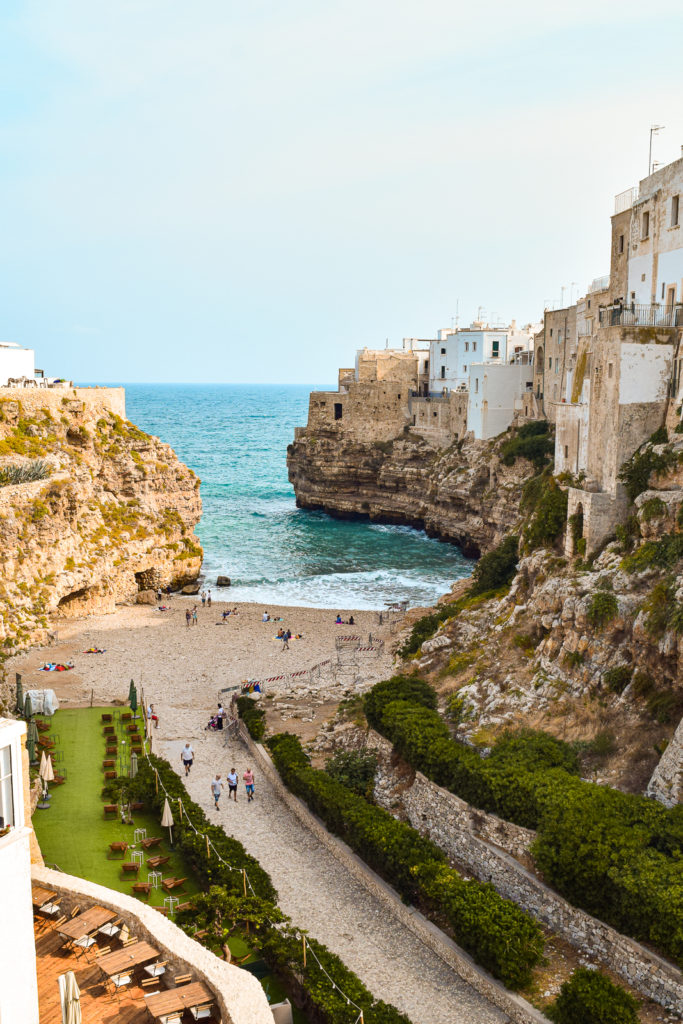
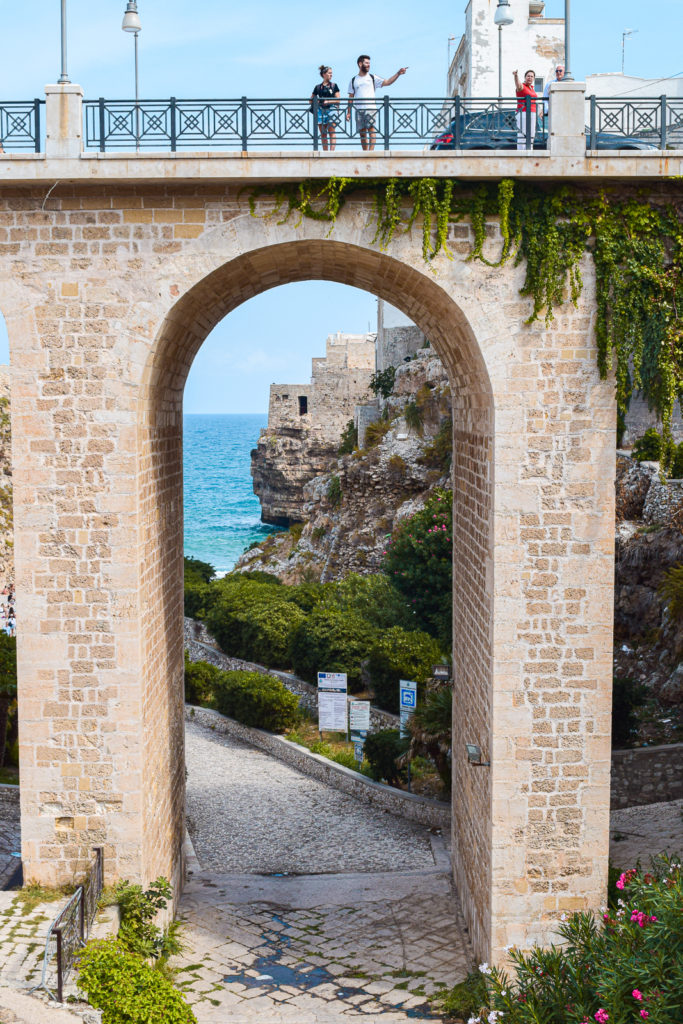
The water here has been considered a Blue Flag since 2008. Now, some of you may hear me say that and think to yourself…this is just like when you read “this wine was awarded 92 points“–you have no idea what that means, but it must be good. That’s happened to me countless times. Blue Flag is one of the world’s most recognized voluntary eco-labels awarded to beaches, marinas and sustainable boating tourism operators. I mean, it’s been awarded as the perfect sea, so you have to be tempted to jump in it. If it’s not a super busy day and you want to jump in the water, go for it. Otherwise, I recommend you go to one of the other beaches I mention below. You can capture the view of this beach from the Ponte Borbonico or Roman bridge that’s on the once historic Via Traiana.
7. Domenico Modugno Statue
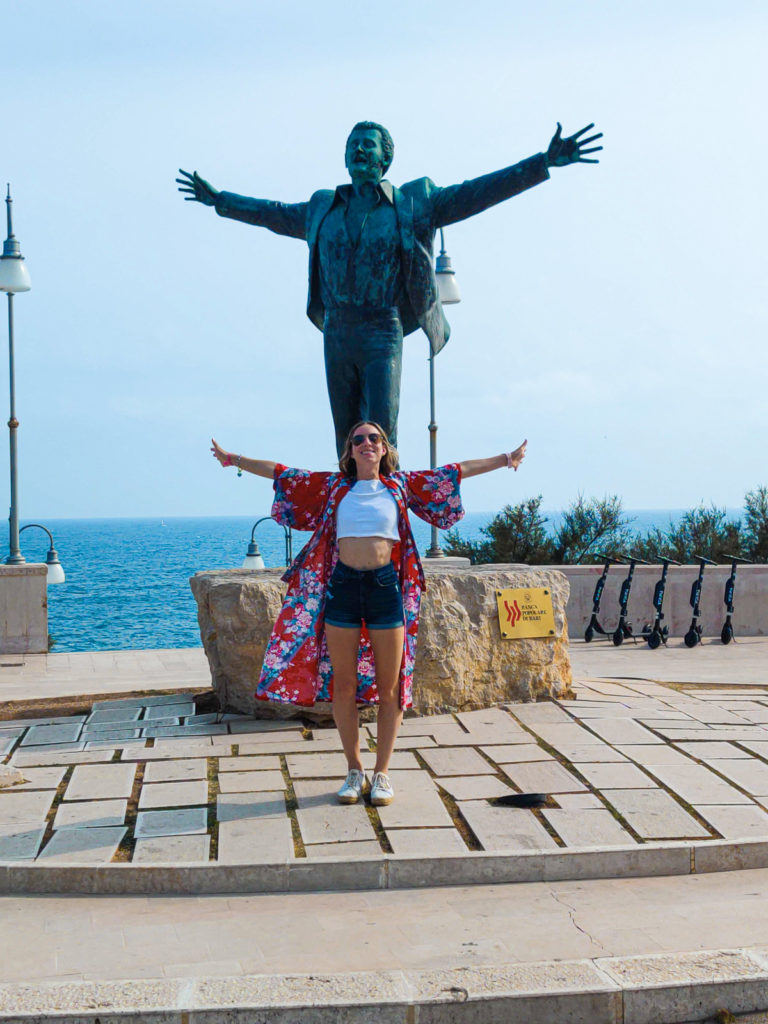
Volare…ohh ohhh…Cantare…ohh ohh ohh ohh…nel blu dipinto di blu, translates to fly and sing in the blue painted blue. As soon as I hear this song, my grandfather Nonno Giorgio immediately comes to mind. He used to sing this all the time when I would go visit him in Italy. It’s one of those traditional Italian songs that when you hear gets stuck in your head on repeat. The song was written by Domenico Modugno born and raised in Polignano a Mare. The blue painted blue that Domenico Modugno was inspired by was the sea of Polignano a Mare. A statue of him flying is now dedicated to him in front of Pietra Piatta. If the song doesn’t sound familiar you’ve definitely heard of it…the below might help jog your memory.
8. View Point #3: Pietra Piatta
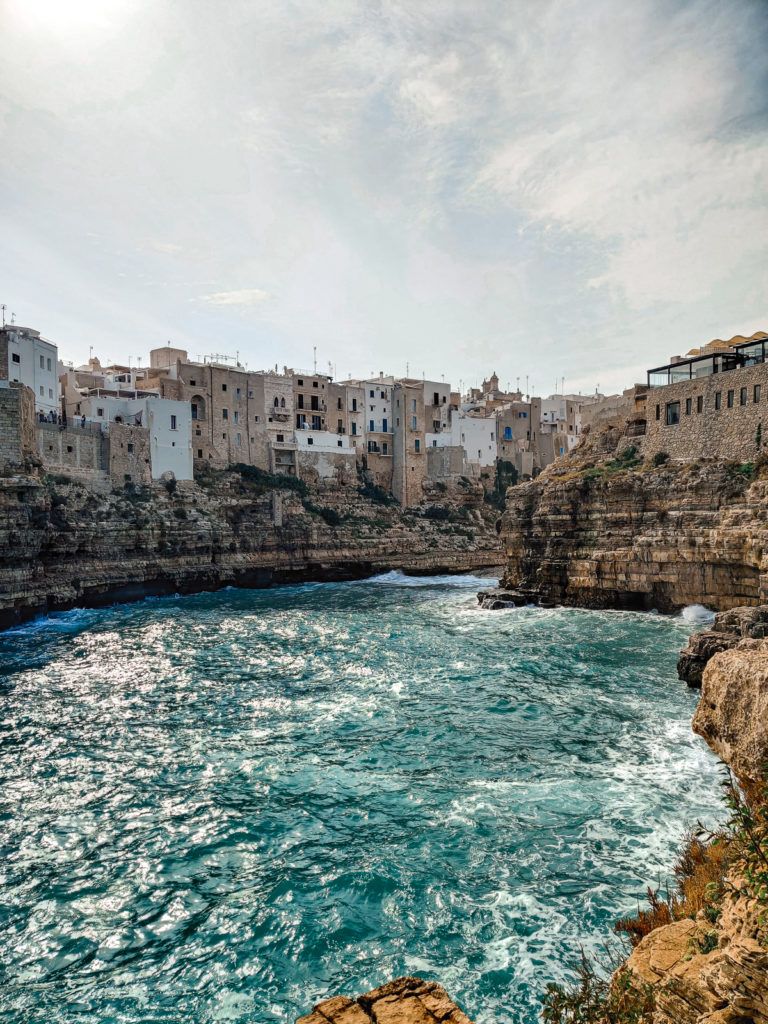
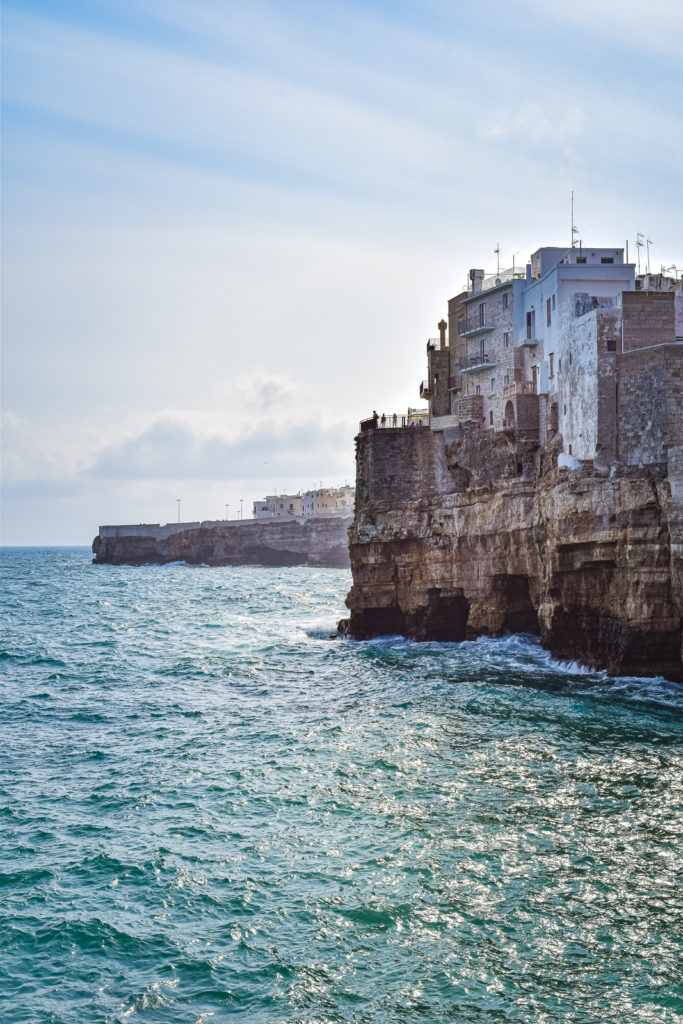
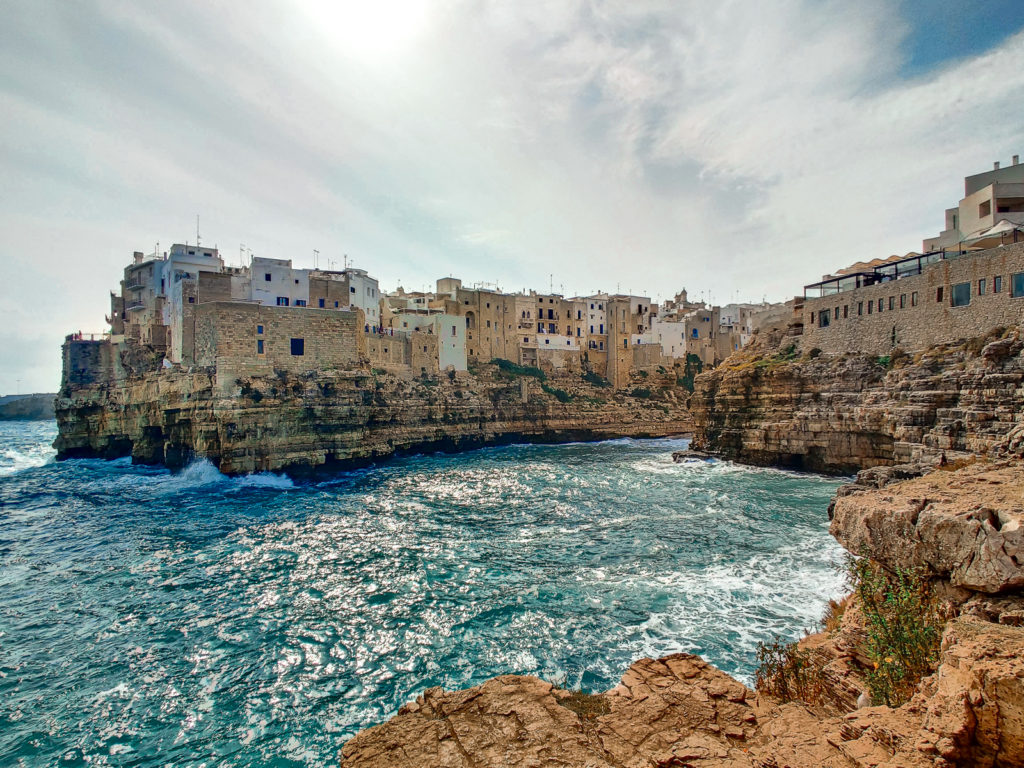
Pietra piatta or the flat rock. A large jutting rock that comes as far out for you to see the Blue Flag waters of the Adriatic Sea, the centro storico of Polignano a Mare, and the famous Lama Monachile. At night, laughs and echoes of Volare can be heard floating towards il centro storico coming from young people on pietra piatta .
9. Beaches: Natural Swimming Pool at Grottone and Lido Cala Paura
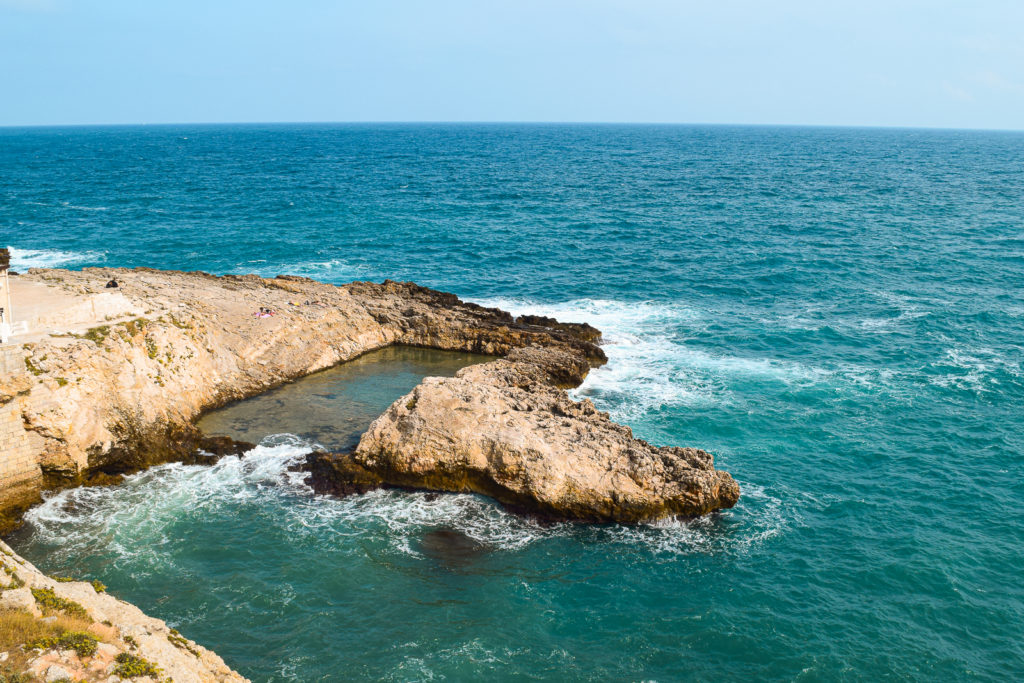
Continue along the Domenico Modugno seaside walkway, north towards Bari, and you”ll come across a series of beaches and coves. Some fairly busy others less so. The first you come across is Spiaggia del Grottone or Grottone beach. This was actually one of the first places in Polignano a Mare set up for swimming. A natural swimming pool is created out of historic rocks where people can jump in and out of the water. There’s also a small restaurant called Ristorante Il Grottone where you can enjoy fish should you choose to spend the day there.
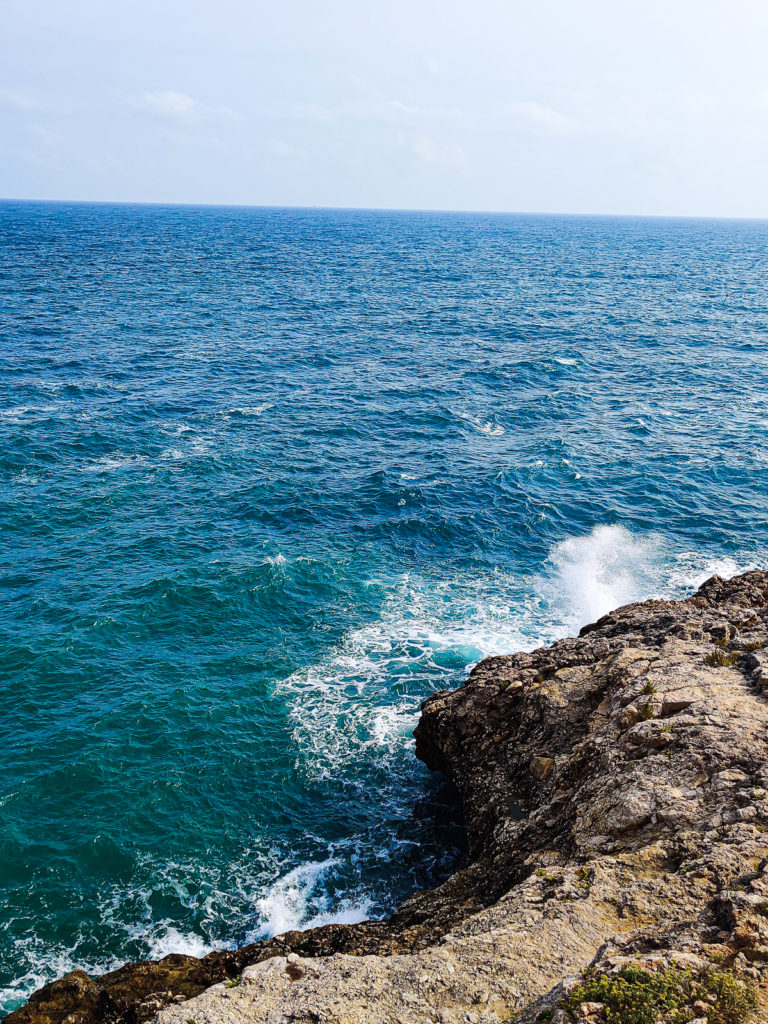
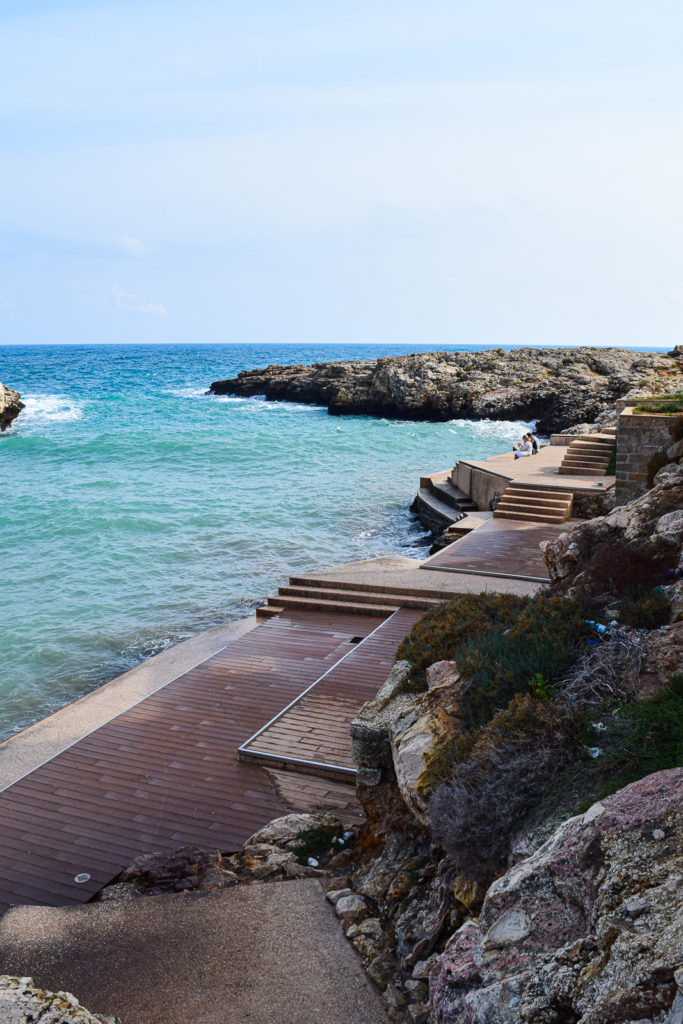
Just a few steps further from Spiagga del Grottone is Lido Cala Paura. It’s a pebble cove with beautifully designed steps on the right for those who wish to walk or sunbathe and a pebbly beach tucked between the cove. Traditional fishing boats are almost always tied up here offering a picturesque corner away from Polignano a Mare. On a hot summers day, the beach chairs and area is packed. But when I was there in September, it was fairly empty.
10. View Point #4: Punto Panoramico Largo Ardito
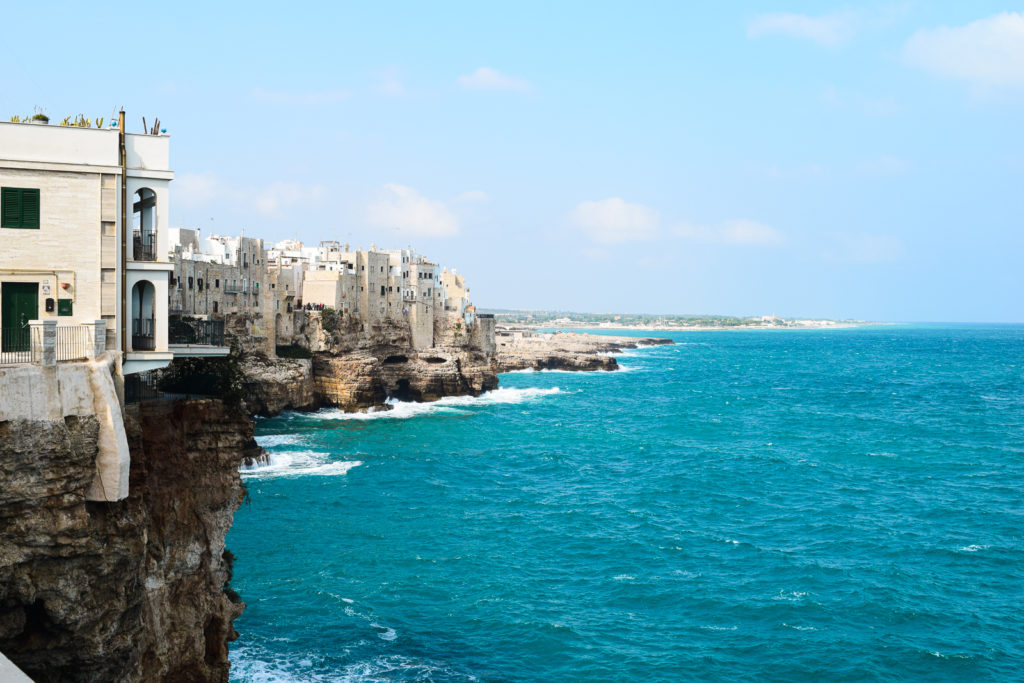
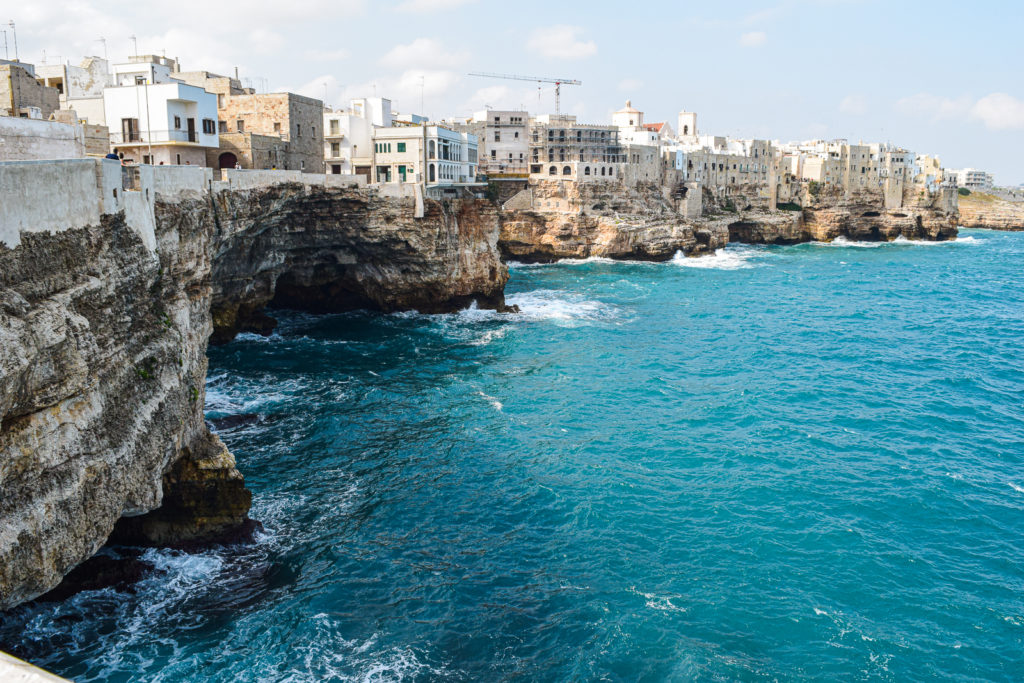
If you begin to walk back towards Polignano a Mare and stay on the coast, the Domenico Modugno walkway will turn into the Lungomare Cristoforo Colombo. This walkway takes you down to the south side of Polignano a Mare along the coast. It is a very long walk, so on a summers day make sure to pack sunscreen and a hat. At the end of Polignano a Mare you will come upon the fourth and final viewpoint Punto Panoramico Largo Ardito. It’s a terrace that extends itself out into the Adriatic sea so you can take in teh view of the rocky Polignano a Mare coastline in all it’s glory. This is probably my favorite viewpoint of all on land. This is where you can take in the Polignano a Mare coastline adjacent to the Adriatic sea, and clearly see the grottos forming underneath the centro storico.
Where to Stay
Bed and Breakfast Dimora Santo Stefano
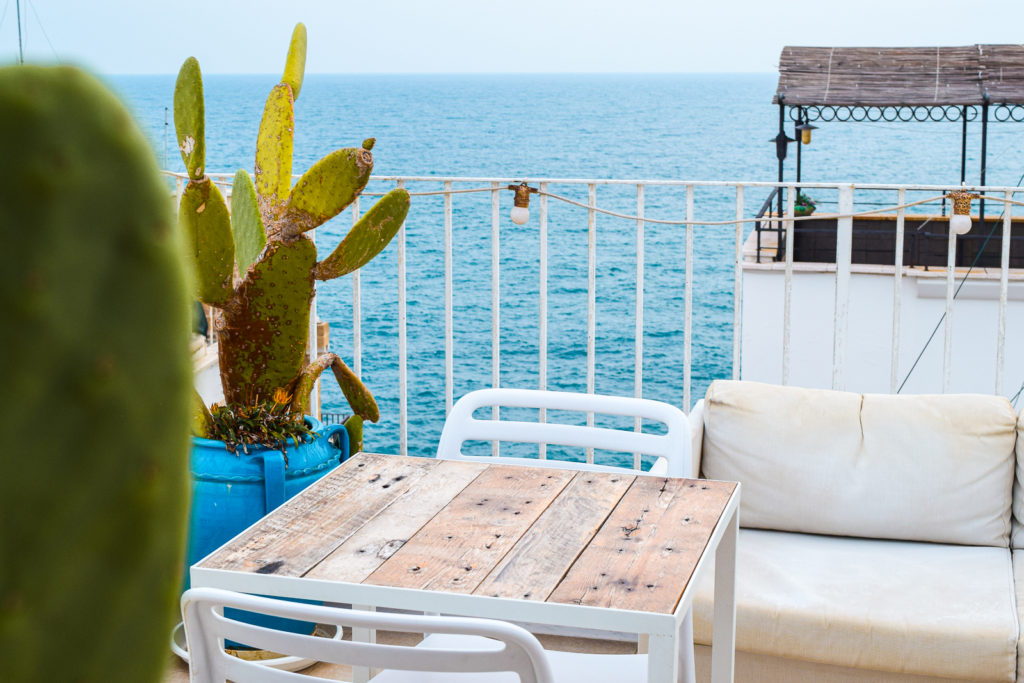
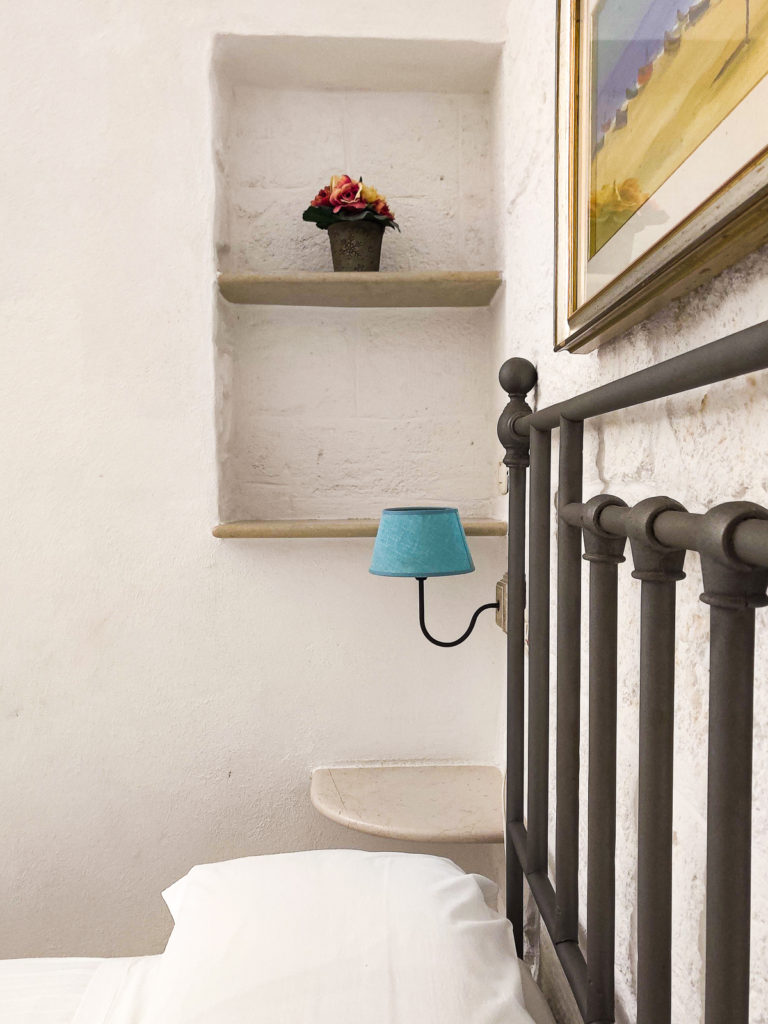
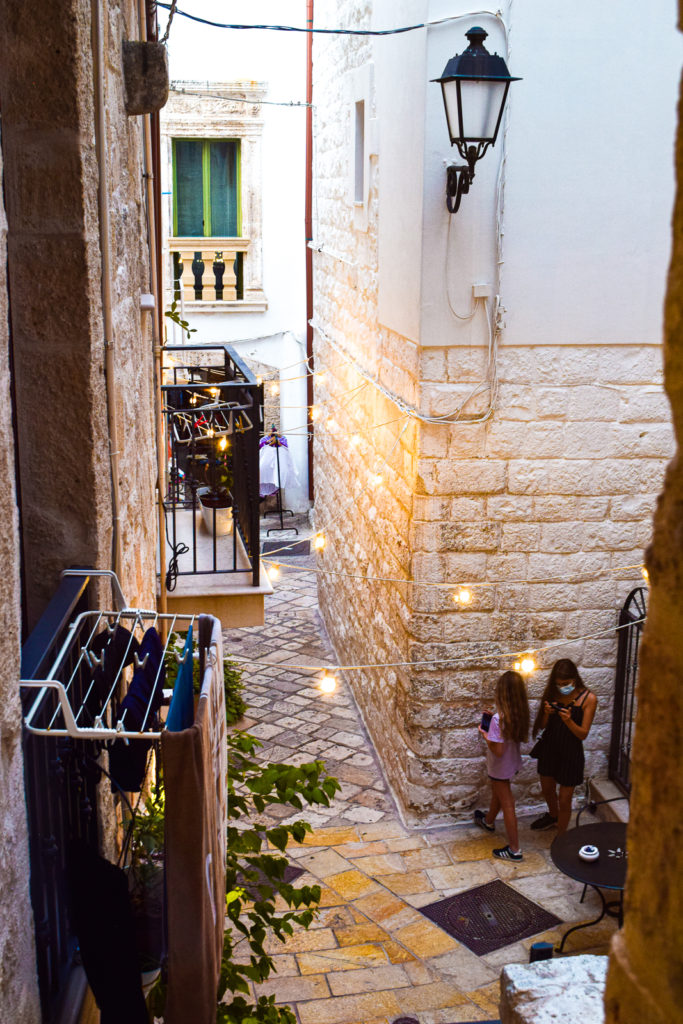
Polignano a Mare Hotel: Where to Stay Bed and Breakfast Dimora Santo Stefano
Prime location, center of the old city, sea views, an alley that’s a reprieve from the blasting summer heat, and a local family run bed and breakfast. Dimora Santo Stefano is an ideal stay when in Polignano a Mare. And the best part? It’s too good to be true, but this Polignano a Mare hotel is actually extremely affordable starting at $74 per night.
Map
How to Get Around
Since Polignano a Mare is really small, it can all be seen on foot–and you kind of have to. Especially since all of centro storico is a pedestrian only zone, so no cars are allowed within the old walls. But that makes parking fairly difficult to figure out. The safest place to park is at the Polignano a Mare train station. It is a bit of a walk from there (about 10 minutes), so if you’re in two and have a lot of luggage, it may be best to drop off one person with the luggage at the centro storico while the other one parks the car at the train station. And the best part about parking at the train station is that it’s free and you don’t risk getting fined!
Important Things to Know
Get my look!

Satin Red Kimono
$12.99

Fitbit Versa 2 Petal/Copper Rose
$176.50
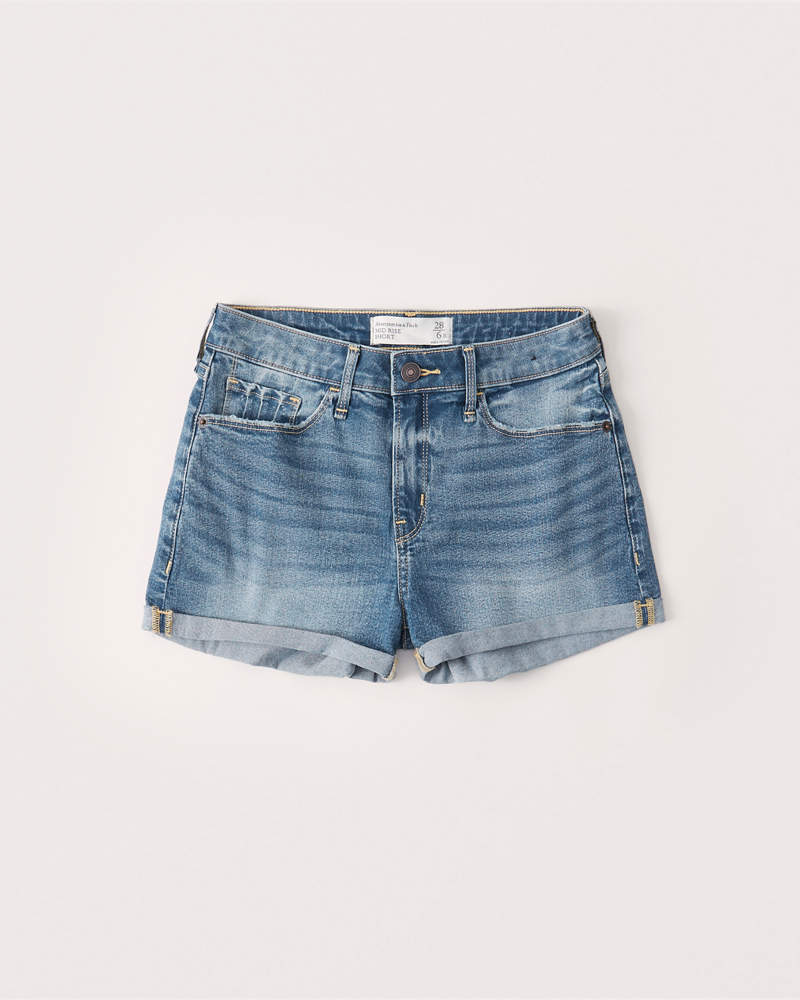
Abercrombie & Fitch Mid-Rise Denim Shorts
$39.95

Soludos Izzy Lace-Up Espadrilles
$40.00
>> Next: How to Experience the True Magic of Matera, Italy
Follow SVADORE on:
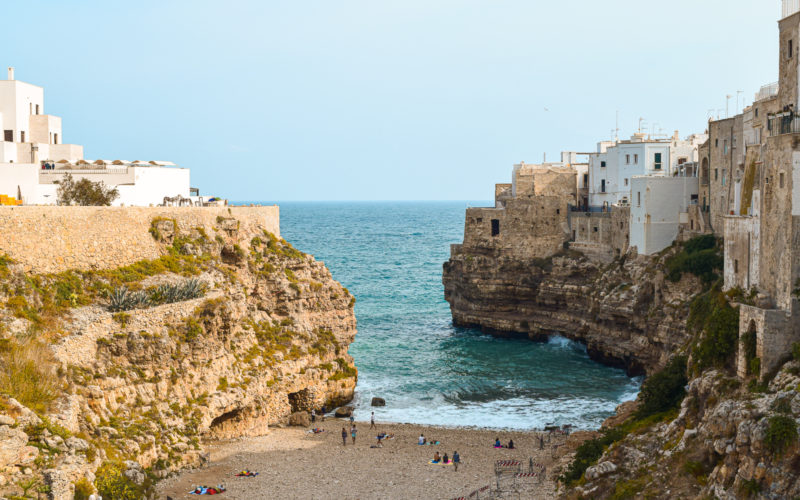
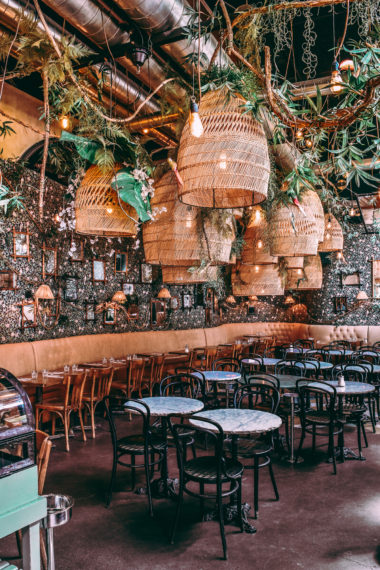
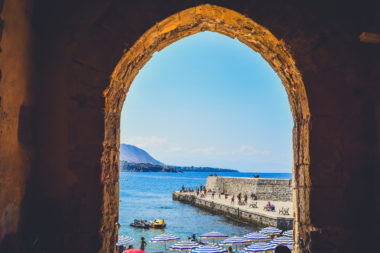
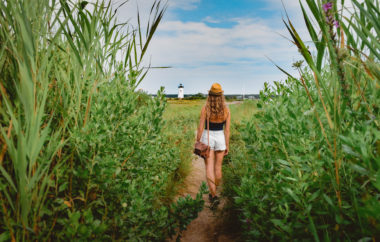
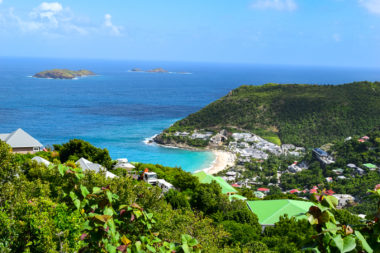
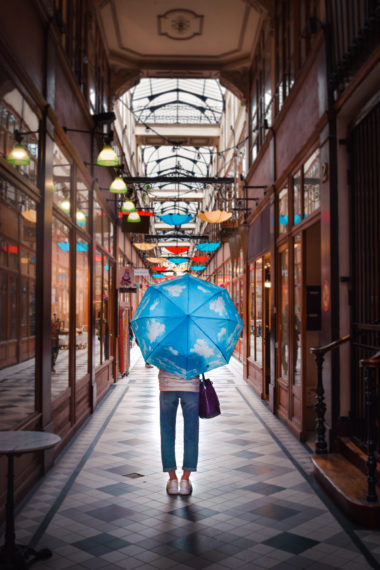
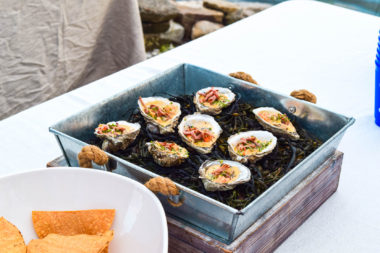

5 comments
I love Italy, but this place is still unexplored to me. I wish to go there some day.
definitely recommend it. puglia is an up and coming destination in italy that is usually secondary to the larger more known amalfi coast, florence, rome etc. but definitely worth adding to your list alongside sicily! 🙂
Great gift guide!
http://www.upyourvlog.com | http://www.tillyandrouge.co.uk
Thanks for this post, I am a big big fan of this web site would like to proceed updated.